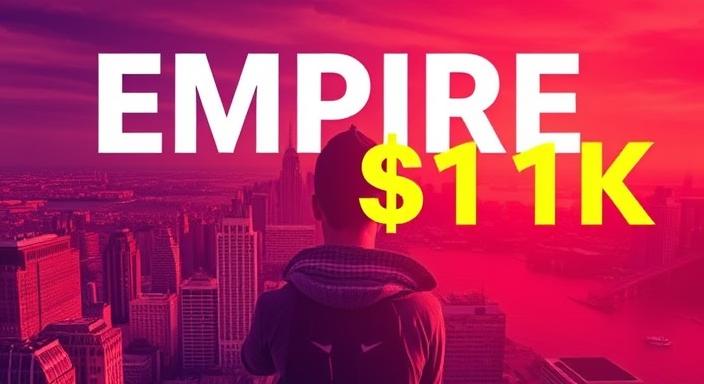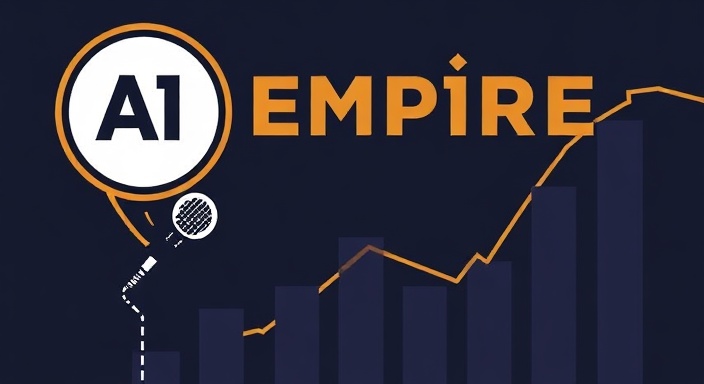The Hidden Potential of AI-Powered Faceless YouTube Podcasts | AI Podcast
This brief covers a new way to earn passive income. It involves creating AI-powered, “faceless” podcast videos for YouTube. New AI technology is creating realistic and engaging podcasts. Some tools help make viral videos, leading to big profits for early users.
Central Themes and Key Insights: AI Podcast
1. Channels in the Faceless AI Podcast:
A new business is experiencing steady growth. “Faceless YouTube channels” make $11,000 a month by posting podcast videos made with AI.
These channels use AI to generate hosts, scripts, comments, and sounds. They mimic real conversations.
The content focuses on casual discussions about themes rather than perfectly scripted videos. It aims to engage a specific segment of the audience.
2. AI Realism Achieves Breakthrough with “Combination Mode”:

A new AI tool, Combo Mode, makes AI-generated podcasts “way more realistic than before.”
The “Combo Mode” lets you layer AI voices. The hosts interact like two people in a room. They can laugh together, like in real conversations.
The added level of realism involves minute human elements like “the host breathing and… thinking out loud like a real person does.”
3. Untapped Market and Viral Potential:
The technology is still new. Most of these tools are less than a year old. So, very few people know how to use them.
He mentioned that podcasts using “old first-generation versions” of these apps are still popular, even if they are new. They’ve gone viral and are getting millions of views.
One example is a channel that started posting videos 7 months ago. It now has over 450,000 subscribers and more than 10.9 million views. In the last 28 days, it earned an estimated $4,000 to over $11,000 from YouTube’s monetization program.
There’s great potential for people to make money with these new tools. They can find untapped YouTube niches.
4. Step-by-Step Production Process:
The briefing breaks down a three-step process for producing these AI-driven podcasts:
a. Chatty Podcast Script Generation (Wondercraft AI):
We choose Wondercraft AI as our top tool. Its advanced features, like Combo Mode, stand out in a striking manner.
Process: AI Podcast
Log in to create a free mini-podcast to start, as you need a creator account for all features.
Open Combo Mode to simulate real-time interactions.
Choose the podcast prompt and then the Canva mode prompt.
- Niche: [Your niche here]
- Desired video length: [Specify length]
- Podcast name: [Podcast title]
- Host names: [List host names]
Also, let hosts interrupt for a more natural flow.
Source Reading: Summarize articles and posts using ChatGPT. Then, compile them into a PDF for Wondercraft’s use.
Split the generated script by host. This makes it easier to edit. This is one of TL;DR’s advantages over tools like Google’s Notebook LM.
b. We’ve picked podcast hosts and are making audio (Wondercraft AI):
Customisation: Wondercraft is unique. It allows users to select their hosts and decide how they sound.
You can use filters to narrow down voice options, and you can hear previews.
**Credit System:** You pay credits to generate audio. Use the promo code “wholesale Ted50” for a 50% discount on your subscription for the first three months.
Users can create up to three podcast audio versions for free after the first one. They can choose and mix these versions if they like.
c. How to Make a Host Photo Screen (Canva & AI Image Generators):
Polk noted that good AI podcasts keep visuals simple.
They use “a screen with a picture of their AI host and the title of their show, and that’s it.”
Canva: Used for graphic design. Start a new project at your chosen size. I used the simple default of 1920 x 1080 px. Add a gradient background. AI podcast
Assets:
- A rounded rectangle for the title text.
- A text box for the podcast name (using Canva templates).
- A graphic for the “subscribe” button.
“
*Host Photos:* Use “frames” for the frames of hosts.
*AI Image Generation:* Use free tools like Leonardo to host images. You can also choose paid options like DALL-E or Midjourney.
*Integration:* Users can upload files and drop them into Canva frames for customization.
*Export:* A download button for the final host screen in PNG format.
Creating the video (Clipchamp or other video editors):

*Video Editor:** You should be able to use any video editor you like. I recommend Clipchamp as a free option.
*Mix and match:* up the screens of the AI podcast audio and the host’s image.
Where to Put It in the Timeline: Place the podcast clip in the timeline. Then, add the host image screen and extend it to match the audio length.
*Visualizer:* Apply an “audio visualizer overlay” from your content library.
*Customization:* Move the visualizer to the bottom middle to keep it clear of the hosts. Pick colors that fit the podcast’s theme. AI Podcast
*Export:* Name of the episode and export it in 1080p.
5. Future Prospects and Examples:
The end of the briefing highlights that the podcasts feel natural. This includes the hosts’ breathing, thinking, and even laughing together.
This example shows that the model understands modern topics like “Google I/O,” “Gemini Live,” “Image 4,” and “Veo 3.” It also suggests that the system can discuss current affairs.
These sources show a new way to create and make money from YouTube content. Recent AI advances help produce engaging audio and good visuals. This is an “exciting opportunity” with low startup costs and effective early channels.


